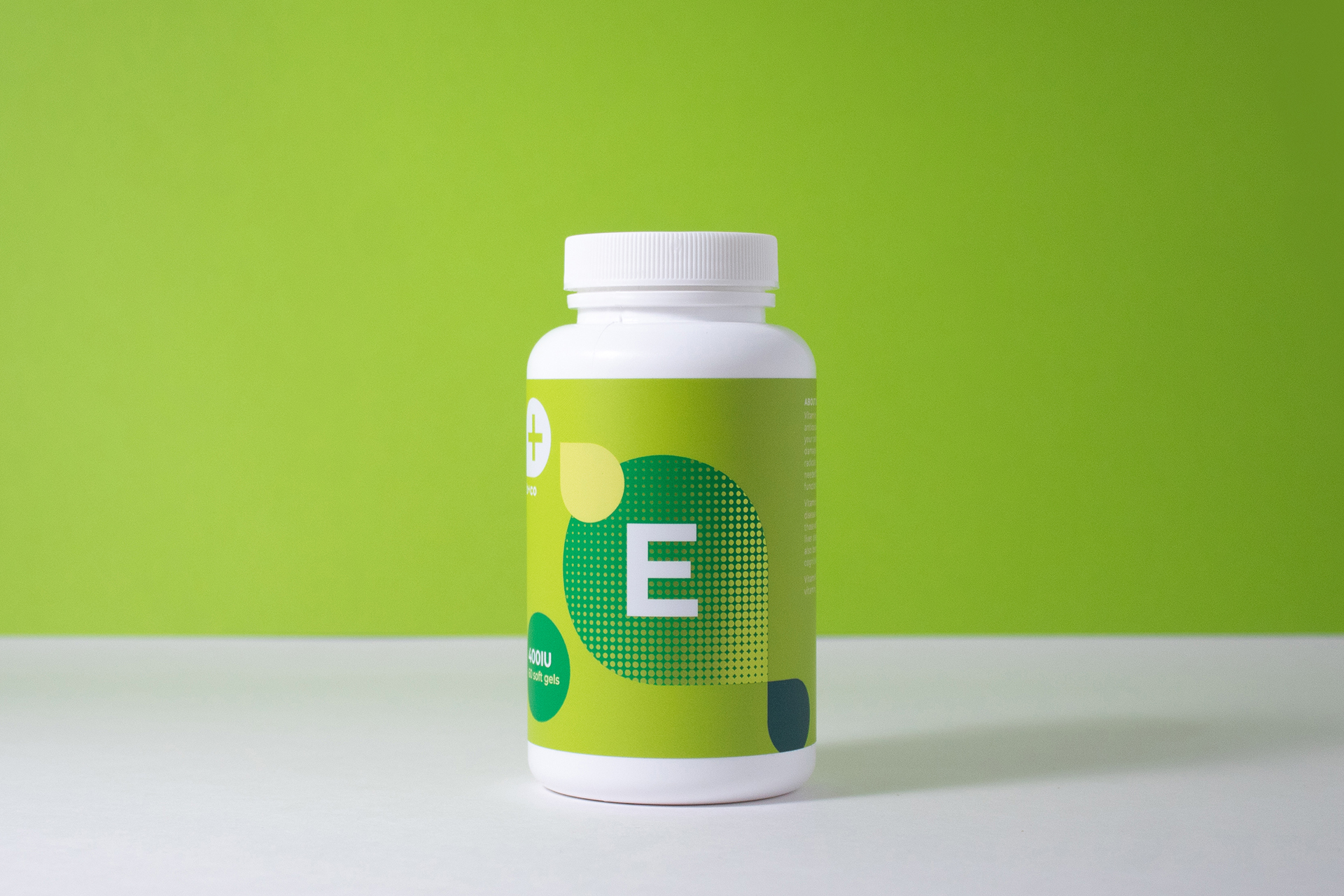Are you a supplement brand looking to stay ahead of the competition? Are you looking for the best way to create labels and packaging that speaks to your target audience? Look no further! This guide is your go-to resource for all your nutraceutical labels and packaging questions. Our comprehensive guide gives you everything you need to create aesthetic, functional, and sustainable packaging.
This guide will help you understand the nutraceuticals market landscape and how to create the best packaging for your ideal customer. We’ll walk you through selecting the right materials and print method, and provide tips for designing an eye-catching, FDA-compliant label for your next nutraceutical product.
This guide to nutraceutical labels and packaging covers the following:
Table of contents
Understanding today's nutraceuticals market landscape
The nutraceuticals market is expanding at a rapid pace. Market analysts valued the global market at $454 billion in 2021 and expect it to grow at a compound annual growth rate (CAGR) of 9% from 2021 to 2030. The nutraceutical market is highly competitive, led by a handful of international CPG companies. That said, many small to mid-tier brands are driving innovation and pushing the market forward.
Vitamins, dietary supplements, and functional foods and beverages are becoming a vital part of consumer health and wellness routines. In fact, four in five American adults report dietary supplement consumption, the highest reported usage to date.
While there are many driving factors behind this market growth, including rising healthcare costs and an aging population, the most notable is the population’s lifestyle shift during the COVID-19 pandemic. Now more than ever, health and wellness are at the forefront of consumers’ minds.
With rising demand, several consumer trends have emerged. These top nutraceutical trends include:
- Demand for variety and novelty
- Recyclable and eco-friendly packaging
- Product safety and authentication
- Convenient and on-the-go-packaging
We urge you to keep these trends in mind as you walk through this step-by-step guide.
Demand for variety and novelty
Whether it’s new flavors or formulations, today’s consumers demand variety and novelty. In the nutraceuticals market, this desire has led to an explosion of SKUs and pressure on brands to produce a broad product portfolio.
You can look at this trend in two ways: On the one hand, product innovation and SKU proliferation are excellent for business growth. Product line expansion boosts market share, brand awareness, and customer loyalty. On the other hand, it can adversely affect your brand. Heavy competition, comparable products, and low-cost manufacturing have lowered consumer switching costs. In today’s market landscape, launching new SKUs can be risky.
To use this trend to your advantage, we’d recommend harnessing the unique capabilities of digital printing to increase customer loyalty and manage your product portfolio. Or, rather than experimenting with new flavors, try a unique packaging format like stand-up pouches.
Recyclable and eco-friendly packaging
Sustainability is becoming a minimum requirement for doing business. The good news? For brands with clear sustainability goals, consumer support is higher than ever. According to a recent consumer study, 60 to 70 percent of US consumers are willing to pay more for sustainable packaging when labeled as eco-friendly. And, more and more consumers expect packaging to be recyclable or include higher levels of recycled content.
Whether you’re using rigid plastic packaging or flexible packaging pouches, sustainable supplement packaging is within reach.
Blog post: How to create sustainable supplement packaging
Product safety and authentication
According to consumer studies, 79 percent of Americans trust the nutraceuticals industry and have confidence in the safety and quality of dietary supplements. Unfortunately, this trust presents an opportunity for bad actors. Counterfeiting has now found its way into the supplement industry. However, unlike a fake handbag, fake supplements put a buyer’s health at risk. Because consumers ingest these products, it’s crucial that your labels and packaging instill confidence that your product is safe and legitimate.
Today’s leading supplement brands protect customers by simply adding a tamper-evident neckband around the lid of their packaging. Or, they integrate tamper-evident features into their overall packaging design.
Ways to protect your brand from counterfeiting include incorporating digital watermarks, invisible inks, or QR codes in your design. These solutions create a unique digital identity that only mobile apps can read.
Convenient and on-the-go packaging
Last but certainly not least on our list of nutraceutical trends is the shift toward convenience. People are busier than ever and willing to pay more for convenience. As a result, pre-portioned and prepared functional foods and beverages are in high demand. Similarly, less time at the grocery store makes multi-packs a convenient grab-and-go choice. Should you consider partaking in this trend?
Alongside convenience, single-serve and on-the-go packaging is an excellent way to boost brand awareness. When your product leaves its traditional retail environment, opportunities to engage a new audience open up. Think: your buyer’s coworkers, friends, and family — even strangers they sit next to in public.
Alternatively, multi-packs and variety packs help boost your overall revenue and profit. Bulk packs encourage customers to purchase larger quantities, resulting in lower unit costs and increased margins. Variety packs even allow you to package slow movers with current favorites, reducing waste overall.
Always start with your target audience
The average consumer spends less than 20 seconds making a retail purchasing decision — that’s a small amount of time to make a winning impression! With such a narrow window of opportunity, it is vital that your product offer is unique, effective, and targeted.
So, let’s start with your brand strategy. Does your brand have at least one target audience?
A target audience depicts a group of consumers with shared demographics such as age, gender, income, lifestyle, or geographic location, as well as psychographics such as interests, motivators, and pain points. It also outlines how and why they buy.
With this target audience in mind, your next action is to identify their packaging requirements.
Choosing the best packaging for dietary supplements
Your first step in creating a nutraceutical product that speaks to your target audience is choosing a suitable packaging format. We can’t stress this enough: packaging is your primary interaction with them and will significantly influence their purchasing decision.
Most nutraceutical brands start by defining the intent of their packaging. This step is crucial to good supplement packaging design, as it drives the overall look and functionality.
What is the purpose of packaging?
Packaging has many different purposes. Aside from physical containment of your product, supplement packaging:
- Protects your product from physical damage and damage caused by moisture, oxygen, light, and pests
- Aids in communication, identifying the product inside, its use, and benefits
- Promotes your branding, message, and unique selling proposition (USP), encouraging consumers to purchase your product over your competition
Leading brands know that packaging isn’t just a means of product protection and communication — it plays a critical role in the buyer’s product experience and what they think of your brand.
What does your target audience expect from your product packaging?
An essential step in software and applications design, user experience (UX) is now making its way into package design. In the nutraceuticals market, UX is especially vital. Because nutraceutical products are supplemental in nature, your product — and its packaging — must fit seamlessly into your buyer’s lifestyle and reduce user friction.
We’ve all had less-than-stellar packaging experiences. Think back to a safety seal that’s impossible to remove or a pouch that won’t tear in the correct place — for some of us, this experience factors into whether or not we repurchase that product.
So, what does your target audience expect from your packaging? What features would attract your target consumer? Do they require packaging to be easy to open, tamper-evident, child-proof, portable, or resealable?
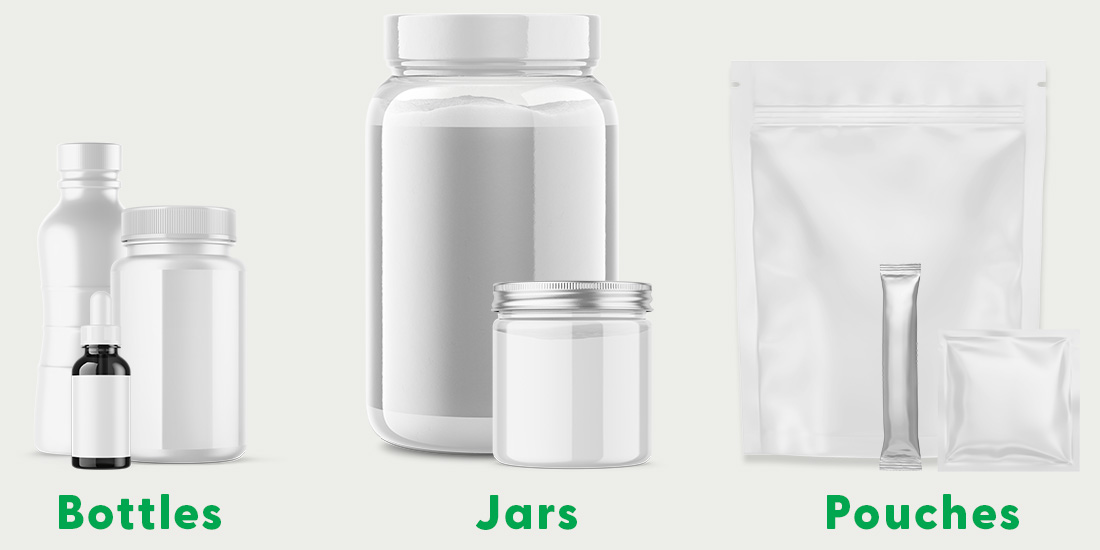
Bottles
Bottles are the most common type of supplement packaging, typically used for liquids, tablets, capsules, soft gels, and gummies. Their rigid shape protects the contents from moisture, oxygen, pests, and physical damage. Bottles come in clear PET plastic, white or colored HDPE or PP plastic, and clear or colored glass. Transparent bottles are particularly best for showcasing your product and its quality.
Generic bottles are easy to source and very versatile, offering a blank slate for designers. When paired with a custom label, you can transform a generic bottle into something that stands out on the shelf. For additional functionality, add tamper-evidence to any bottle with a tamper-evident neckband. Or, integrate tamper-evident features into an over-the-cap shrink sleeve design.
Keep in mind that bottles are typically only portable if they are travel-sized or single-serve. Generally, bottles will sit on a shelf in your buyer’s pantry or medicine cabinet.
Jars
Jars are another packaging format suitable for nutritional supplements and vitamins. Jars have a wider opening than bottles, often as wide as the jar. Because of the wide mouth, jars are ideal for powders, gummies, and tablets. Jars can also accommodate scoops, making portioning easy for consumers.
Jars are typically cylindrical but also come in the form of square boxes or other shapes. Like bottles, their rigid structure protects your product from physical damage, moisture, oxygen, and pests. In the same vein, custom labels and tamper-evident neckbands can quickly transform a blank jar and boost functionality.
Again, a jar will typically sit on a shelf in your buyer’s pantry or medicine cabinet.
Pouches
Pouches are a growing packaging format for dietary supplements and functional foods. Pre-made pouches are lightweight, convenient, and portable — making them ideal for powders, liquids, and gels. Pre-made pouches come in various formats, including reclosable and non-reclosable structures. “Unformed” material, known as roll stock, is also available for brands or co-packers with form, fill, and seal (FFS) equipment who can convert it into packets and stick packs.
Pre-made pouches are versatile and easily customized, allowing you to produce frictionless packaging that meets your customers’ needs. Brands can choose from many sizes, shapes, and open and close options to create convenient and functional packaging.
One of the biggest reasons flexible packaging is trending is its visual impact. Rather than blending in with rows of bottles and jars, the unique shape stands out on the shelf. This format also gives marketing teams more space to maximize shelf appeal by allowing for 100% print coverage of the material.
Why more nutraceutical brands are switching to flexible packaging
Selecting your label type (for rigid packaging)
Once you’ve chosen a suitable packaging format for your nutraceutical product, your next decision is to select the label type. For jars and bottles, pressure sensitive labels or shrink sleeves are your best labeling option. Alongside product labels, you may look to add extended content labels (ECLs) or custom tamper-evident neckbands to your rigid packaging. Typically, brands or co-packers will apply these packaging elements after filling and capping.
Pressure sensitive labels
Pressure sensitive labels are one of the most popular labeling methods in the world. They are cost-effective and fully customizable. Nutraceutical brands choose pressure sensitive labels because:
- They are straightforward to apply by hand or machine applicator
- They are available in a variety of facestock, adhesive, and liner combinations
- Embellishments such as foils and tactile varnishes are easy to add
One limitation of pressure sensitive labels is that they require a smooth, even surface to adhere correctly to your packaging. This characteristic makes them ideal for simple rigid packaging shapes but not more complex containers.

Custom product labels
Create vibrant packaging. Formats include front, back, and full wrap labels.
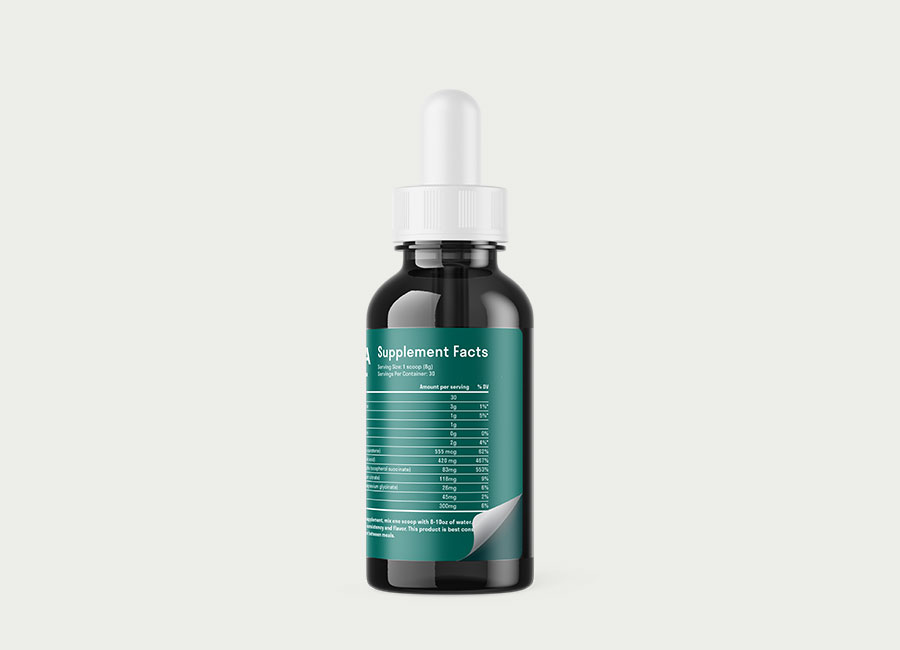
Extended content labels
Engage customers and add extra space. Formats include peel-and-reveal labels and booklets.
Shrink sleeves
Shrink sleeves create a sleek look and feel and are quickly becoming a leading packaging choice for brands and contract manufacturers. Heated until they shrink tightly around your container, shrink sleeve labels provide 360-degree branding. Nutraceutical brands choose shrink sleeve labels because:
- They fit any container shape
- They come in many formats, including full body, over-the-cap, large format, and partial shrink sleeves
- Designers can easily integrate tamper-evident perforations into an over-the-cap sleeve design
- Embellishments such as foils and tactile varnishes elevate simple designs
However, there is an art to shrink sleeves. Unless you have a simple shape — such as a cylindrical bottle — you’ll need to submit container samples or part drawings to determine the correct dimensions for your project. Then, when it comes to applying your printed shrink sleeves, it’s essential to have experienced packagers. Otherwise, you can face application issues such as wrinkles, uneven shrinking, or tearing.
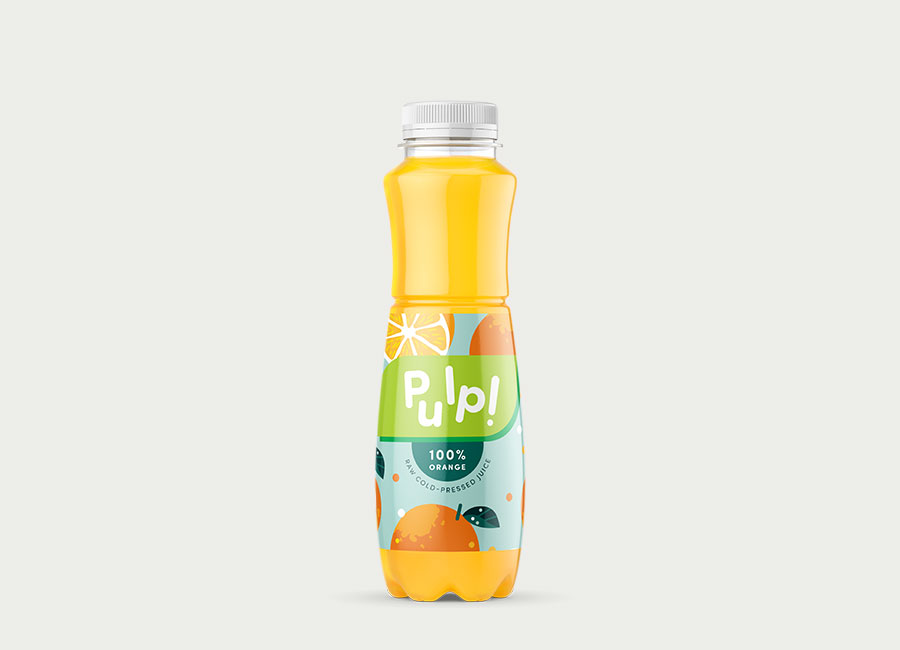
Partial
Allow buyers to see product quality.

Full body + over-the-cap
Maximize brand impact and integrate tamper evidence.
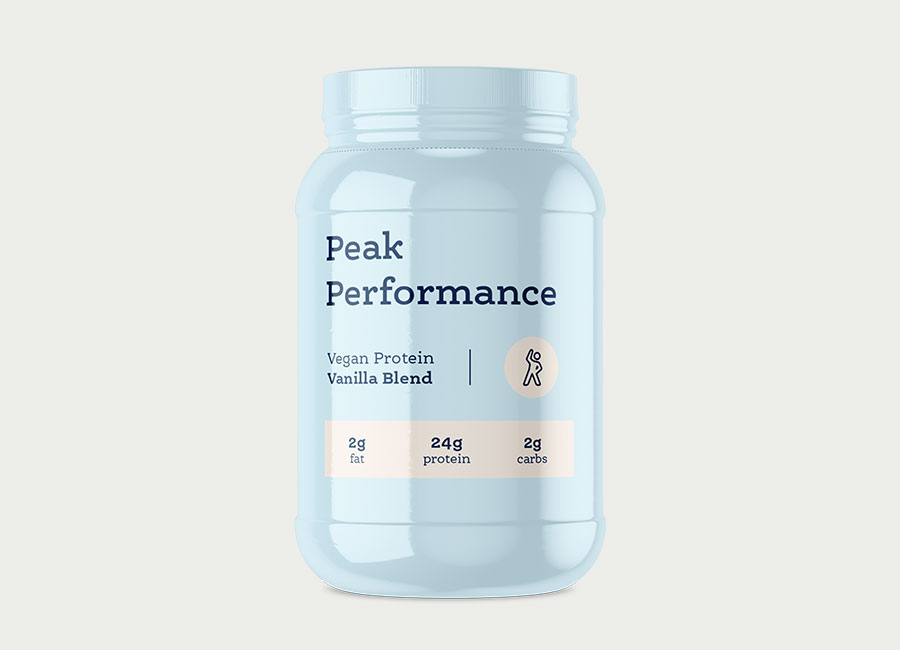
Large format
Print up to 500mm layflat for large containers.
Creating sustainable rigid plastic packaging
Rigid plastic packaging is standard across most markets, including the nutraceutical market. PET and HDPE are the most common plastics for packaging vitamins, dietary supplements, functional foods and beverages. The good news: PET and HDPE containers are widely recyclable. The bad: labels, inks, and adhesives can contaminate the recycling process. To ensure a closed loop for recycled packaging, nutraceutical brands need solutions that work with the current recycling system.
Design with recycling in mind
Where should you start? The voice of plastics recycling, The Association of Plastic Recyclers (APR), publishes an excellent resource called the APR Design® Guide for Plastics Recyclability. In it, you’ll find guidelines and lists of “preferred” components to help you design recycle-friendly supplement packaging. Brands that utilize these preferred components ensure their packaging can recycle into high-quality post-consumer recycled content.
Brook + Whittle has worked with the APR for years and has tested various printed labels to meet their guidance requirements.
PET solutions
Our GreenLabel™ solutions for PET packaging enable recycling without sacrificing performance or aesthetics. These solutions meet the APR Design® Guide and are compatible with existing application and filling equipment.
- This pressure sensitive wash-off solution pairs floatable films with a recyclable wash-off adhesive, allowing the label to cleanly release from the PET flake.
- This crystallizable shrink solution is a PET-C film printed with our GreenLabel™ ink system. These inks completely wash off the ground shrink flakes, allowing the label and bottle to be recycled. This solution maximizes impact on the shelf and provides 360-degree branding without sacrificing recyclability.
- This light-blocking shrink solution is a crystallizable shrink sleeve with a proprietary light-blocking coating. This coating blocks up to 99% of light, protecting light-sensitive ingredients. And, when your package is recycled, it correctly sorts as PET plastic!
HDPE solutions
Our GreenLabel™ solutions for HDPE packaging also meet the APR Design® Guide, enabling correct sorting and recycling of HDPE containers. These solutions are also compatible with existing label application and filling equipment.
- This pressure sensitive solution pairs floatable films with releasing adhesives, reducing contamination and increasing recycling yield.
- These perforated shrink sleeves provide 100% bottle coverage, giving your product better shelf appeal. Perforations allow consumers to remove the label effortlessly before throwing the package in a recycling bin.
Other ways to improve the sustainability of your rigid supplement packaging
For non-plastic materials or plastics not mentioned above, choosing a renewable or recycled content solution is an excellent way to reduce your carbon footprint.
Blog post: Are recycled materials right for your brand?
Selecting your construction and materials (for flexible packaging)
Have you decided to break the mold on traditional supplement packaging? If so, your next decision is to select your pouch construction and materials. This process requires more decision-making than label selection — you will design an entire primary package. Therefore, you’ll need to consider your technical packaging requirements and your target audience’s needs.
Pre-made pouch structures for nutraceuticals
As we discussed above, most nutraceutical brands opt for pre-made pouches. Although roll stock is available for those with form, fill, and seal (FFS) equipment, most brands find converting this “unformed” material costly, inefficient, and limited. In contrast, pre-made pouches have a lower cost of entry and are available in many sizes, shapes, and formats.
Pre-made pouches come in two categories — reclosable and non-reclosable:

Reclosable pouches
Designed for multiple uses. Formats include stand-up pouches and zip-top pouches.
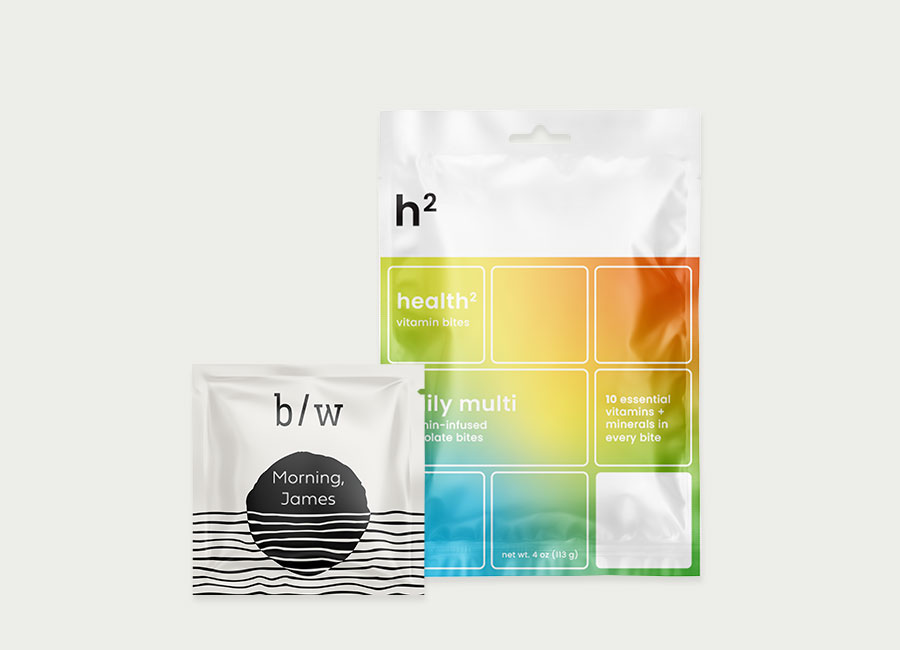
Non-reclosable pouches
Ideal for one-time use. Formats include 2- and 3-sided pouches and pillow pouches.
Materials and lamination
After you’ve selected your pouch format, the next step is selecting materials and building your lamination. Typically, flexible packaging constructions have two or more layers:
- Top layer: acts as the print surface, often called the print layer
- Core layer: provides barrier properties, typically aluminum foil or metalized film
- Sealant layer: an inner layer that protects the contents and is generally food-safe
An adhesive joins each layer in a process called lamination. High-quality lamination is vital in creating pouches that protect against oxygen and moisture while locking in flavor and quality.
Our most common film laminations include:
- PET to PE
- Metalized PET to PE
- PE to PE – recyclable
- AlOx to PE
- PET to CPP
- Cosmetic web
Here are a few examples of these constructions in the marketplace:
- Laminating high-density PE to a metalized core layer to protect powdered supplements from moisture, oxygen, and light
- Utilizing white ink under the graphics on a metalized PET top layer to create a dynamic, embellished look
- Using clear PE film and graphics to create transparent windows, showcasing the product inside
We offer gloss, matte, and soft-touch matte finishes to protect and embellish your print design. These can be flood varnishes (covering the entire design) or spot varnishes (on select areas of the design). With our digital capabilities, spot varnishes can also be variable.
Pouch closures
If you’ve chosen a reclosable pouch, your next step is selecting the closure. While there are countless types of closure features available, here are some of the most common:
- Press-to-close zippers: Easy to use, consumers simply match up the zipper tracks and press them together. These zippers are cost-effective and can be added to a wide variety of pouch sizes, ensuring freshness for products such as powders, granules, and gummies.
- Child-resistant zippers: Designed to prevent accidental ingestion of products by children, these zippers feature a locking mechanism that requires two hands to open. They are easy for adults to operate but difficult for children.
- Powder-resistant closures: Keep out unwanted moisture and stop powdered products from becoming trapped in the zipper mechanism.
- Slider closures with or without end clips: Allow for easy opening and closing of large and small pouches, respectively.
Additional features to elevate the user experience
Here are some additional features you may want to consider adding:
- Tear notches: Improve customer experience by allowing consumers to quickly and cleanly tear open the package. Ideal for single-serve pouches used for products such as collagen or electrolyte powder, as well as resealable pouches filled with greens or protein powder.
- Tamper-evident seals: Sealed above the zipper, this closure helps identify if a package has been tampered with or contaminated. It helps show buyers that your vitamin or dietary supplement is safe to consume.
- Hang holes: Allows retailers to display your product on hanging displays, boosting brand presence.
- Transparent or clouded windows: Gives consumers a peek at your product.
Creating a sustainable flexible packaging construction
Did you know traditional flexible packaging is not curbside (bluebin) recyclable in the US? Because it is typically constructed with mixed materials, flexible packaging is difficult to sort and effectively recycle for reprocessors. Still, brands can design sustainable flexible packaging with recycling in mind and appeal to today’s eco-conscious consumers.
One way of doing this is by utilizing mono-material, all-PE constructions. An all-PE pouch is easier to reprocess and is recyclable through collection services like How2Recycle’s Store Drop-off program. How2Recycle and plastic film recycling associations manage over 20,000 locations across the US, partnering with reprocessors or PE film manufacturers to reuse this material.
If that solution isn’t right for your brand, another way to boost the sustainability of your flexible packaging is by using post-consumer recycled (PCR) content or compostable and bio-based films.
Determining your print method
Choosing the best printing method for your custom nutraceutical labels and packaging depends on many factors, including run size, lead time, desired embellishments, sustainability goals, scale-up plans, and more. That is to say, there is no hard-and-fast rule to choosing the right print platform for your next nutraceutical project.
Generally, flexo or rotogravure printing are sensible choices for large label orders, especially if that product will be on shelves across the country. Digital print is typically the method of choice for smaller brands, where the cost-per-label and order sizes may be prohibitive. Still, digital is great for larger brands that want to market-test a new product, offer a seasonal flavor, or would like to try variable or personalized graphics.
Keep this in mind as we walk through the different printing methods available to nutraceutical brands — and the limitations of each — so you can decide the best fit.
Digital
Digital printing is the fastest-growing printing platform for nutraceutical labels and packaging. Suitable for pressure sensitive labels, shrink sleeves, and flexible packaging, today’s digital presses deliver vibrant color, crisp detail, and photo-quality graphics. Unlike traditional print, digital print doesn’t require printing plates or cylinders.
Benefits of digital printing for nutraceutical labels and packaging
Time savings: Traditional printing requires the extra step of producing printing plates, which usually means longer lead times. Digital printing, on the other hand, utilizes plate-less technology, bypassing the cost and time associated with traditional printing.
Cost: Traditional printing can be cost-prohibitive for the small- to medium-sized runs we typically see in the nutraceutical market. That’s because there are fewer labels to spread the setup costs to, making the cost-per-label much higher. In contrast, digital print is cost-effective for brands requiring smaller runs and faster production time.
Effective print management: Digital label and packaging printing gives nutraceuticals brands the flexibility to print what they need, when they need it. That makes digital ideal for nutraceutical brands with many SKUs — helping them avoid obsolete label inventory and unnecessary waste. Better print management also allows brands to market-test new products and keep up with changing regulations.
Variable content: Lastly, digital print is the only print technology that can use variable content. Also known as variable data, this includes text, images, QR codes, sequential numbers, or barcode serialization that change from label to label. In the last few years, we’ve seen an uptick in variable data for products such as custom protein powder and daily vitamin packs. Print personalization has helped supplement brands increase customer engagement and create a memorable brand experience.
Blog post: 7 advantages of digital print for nutraceutical labels and packaging
Flexo
Flexographic printing, or flexo, is the most common printing platform for supplement labels and packaging. Flexo is highly versatile and ideal for printing large areas of color and fine details. Flexo label printing requires flexible printing plates, one for each color or embellishment. Flexo presses typically have 10, 12, or 14 print stations that print process colors, spot colors, and embellishments, all in-line.
Benefits of flexo printing for nutraceutical labels
Economic for medium- and high-volume runs: Despite significant advances in digital printing, flexography is still the clear winner for medium to high-volume print orders. Although digital requires little setup, the printing itself is still comparatively expensive and slow. In contrast, flexo presses run at high speeds after the initial setup, getting you your labels sooner. While printing plates are an upfront cost, brands can use them indefinitely with no additional charge. So, for every print run, your cost per unit drops.
In-line converting: Laminating, embossing, and other embellishment processes add time and cost. But, flexo printing can integrate these processes along the press, cutting overall finishing time. We can add hot foils, cold foils, screens, lamination, coatings, varnishes, and rotary die cutting, all in-line. This capability allows us to complete most jobs in a single pass, saving you time and money.
High-impact color: Flexo is known for delivering vibrant, eye-catching solid colors. Unlike other print methods, flexo presses give an impressively rich color after just one pass and support up to 14 colors on press. Whether you need a CMYK process, spot colors, or a Pantone-matched color, a dedicated printing plate for every color offers high color accuracy.
Rotogravure
Rotogravure printing is well suited for extreme long-run and repeatability. It delivers a high-opacity print and is excellent at achieving half-tone and vignette reproduction. Instead of printing plates, a rotogravure press uses laser-etched cylinders to create your design. Our rotogravure presses accommodate up to 14 colors.
Benefits of rotogravure printing
Long runs and flagship lines: Rotogravure is ideal for flagship lines that run without significant changes. The cylinders last for millions of impressions, ensuring consistency for high-volume runs. Smaller brands don’t typically opt for rotogravure printing. Still, brands with a national presence or fewer SKUs could benefit from this method.
Sustainability: Today, our recyclable shrink sleeve portfolio must print on our rotogravure platform. These solutions utilize our GreenLabel™ ink technology, which completely wash off the ground shrink flakes. This solvent-based ink technology allows the label and bottle to be recycled.
Designing your nutraceutical labels and packaging
It’s time! Are you ready to create a design that captivates potential buyers?
Let’s start this phase as we’ve begun our other steps: with your target audience! This persona gives you the background to identify a design approach that will speak to your target customer.
Make a checklist of packaging elements
Most nutraceutical brands begin this process by deciding what items require a design. The following questions can help you figure out how much real estate you have and where you should focus your efforts for maximum impact:
For pressure sensitive labels
- How much area will the label cover?
- What content should you prioritize on the front?
- What information should go on the back?
- If using an extended content label, what content should it reveal?
For shrink sleeves
Our team of experts will send an art template for your shrink sleeve project that outlines the height of your labels and any areas of high distortion. You should avoid placing important copy in these areas.
- What content should you prioritize on the front?
- What information should go on the back?
- Where are your perforations placed? Do you want copy or branding above these perforations?
For flexible packaging
You will receive an art template for your flexible packaging project from our team, noting zipper placement, tear notches, and other features.
- What content should you prioritize on the front?
- What information should go on the back?
- Are there tear-off portions consumers might throw away after opening your product? Do you want copy or branding placed there?
Determine the necessary content and information to display on the packaging
Next, list all required and voluntary copy that you’d like to include in your design. This may include:
- Unique selling points and promises to your target consumer: Due to limited copy space and a short timeframe to attract a buyer’s attention, it’s best to keep this statement short and sweet.
- Required statements: The FDA requires all supplement products to display the following information on its packaging:
- Identity
- Net Quantity of Contents
- Supplement Facts
- Ingredient List
- Name and Address of the Business, Manufacturer, Packer, or Distributor
- Other beneficial information: You may want to include usage directions, warning statements, or storage suggestions in your supplement label design. This information can increase brand transparency and boost consumer trust.
Identify design elements that speak to your target audience
Now, think back to your target consumer. What overall design style would draw their attention? Would it be a natural, organic, sustainability-focused design? Would they be drawn to a clean, minimalistic design or a bright, bold, graphic-heavy design? By defining the “feel” of your label, you’ll have a foundation to build on throughout the design process.
After determining your overall style, you can then identify specific elements and characteristics for your label design. Note that elements such as the number of colors and embellishments, as well as line thickness and type size, can be limited.
- Colors: What colors do you want to incorporate? How do these selected colors enhance and complement your chosen design style?
- Graphics: What, if any, photo-quality graphics do you want to showcase on your packaging? Do these graphics strengthen the messaging behind your product, fit brand appeal, and effectively capture the attention of your target consumer?
- Patterns: Would any patterns or designs appeal to your ideal buyer?
- Icons and symbols: Are there icons or symbols that identify the key benefits of your product? Some examples of this may be gluten-free, vegan, or cruelty-free symbols.
- Illustrations: A picture is worth a thousand words. Could illustrated instructions be helpful for users of your product?
- Embellishments: Would embellishments enhance shelf appeal and attract consumer attention? You may want to consider foil or glitter, matte or gloss varnishes, or metalized films with a white layer.
Start designing!
Once you have your design plan, you can begin crafting your supplement label! Here are some things to keep in mind:
- Information hierarchy: What product information is most important to display in prominent locations? What information must you legally place in specific sections of the label?
- White space: Is there enough negative space in your design to allow the eye to quickly scan your product? Is it clear which design elements are grouped together and which ones are not?
- Typefaces, fonts, and letter size: Do the selected typefaces, fonts, and letter formatting suit your branding and target consumer? Do these adhere to the FDA text formatting requirements?
- Colors: Is there enough contrast between your chosen colors? Are the colors in CMYK? Are brand colors Pantone-matched?
Ensure your art is print-ready
Evaluate your work
After completing your supplement label design, it’s time to review. Ensure your work meets your desired marketing goals, that all elements are cohesive, and that it matches the construction of your chosen packaging.
We recommend a first impression test — put yourself in your target consumer’s shoes. Would your supplement packaging design effectively captivate and educate your buyer? Is there an appropriate balance between design and content? If yes — you’re ready to print!
Working with a co-packer
Did you just launch a new supplement brand, and it’s flying off the shelves? Are you exploring a new product line or packaging format? There’s no doubt about it, significant growth can come with many challenges. You may be used to going through the manufacturing process alone, but does that mean you have to?
Enter contract packagers and manufacturers. Whether you’re a small, up-and-coming brand or a more established one, outsourcing to these partners can save time and money scaling your nutraceutical business.
What are contract manufacturers and co-packers?
Contract manufacturing is the production of goods by a third party. If a company cannot produce its goods in-house, it typically outsources to a contract manufacturer. A contract packager — or co-packer — is a third party that assembles a product or good into its final, primary packaging.
These types of partnerships can prove invaluable for brands of all sizes.
Why partner with a contract manufacturer or co-packer?
Lower overhead costs
Production facilities, staffing, materials, and equipment are all expensive. Contract manufacturers and co-packers have already made these upfront investments to produce or package your finished product, so you don’t have to. Partnering with these companies eliminates the need to invest in raw materials and equipment, freeing up cash flow to spend elsewhere.
Nowhere is this more important than for startups and small businesses that often need more money and resources to package or manufacture independently. In this case, contract manufacturers help level the playing field so small brands can compete against larger competitors.
Access to industry expertise
Good co-packers and contract manufacturers have experienced engineering teams and access to advanced technology and automation tools. Their technical expertise can help guide brands efficiently through material selection, application methods, and processes.
There are many co-packers and contract manufacturers dedicated to servicing specific industries such as nutraceuticals. This focus allows these companies to develop niche ingredients, product formats, and packaging solutions — improving your product portfolio.
Improves quality
Co-packers and contract manufacturers usually have rigorous quality controls in place to meet regulatory standards. With their industry-specific knowledge and experience dealing with similar products day in and day out, these companies are better at spotting quality issues before they even arise. The result is a more consistent, high-quality product.
Saves time, so you can focus on what you do best
One of the most noteworthy things co-packers and contract manufacturers do is save you time. By taking packaging supply chain activities off your plate, you’re free to focus on marketing, branding, and other sales aspects.
Reduces your physical footprint
Let’s face it — producing consumer goods requires space. From storing the necessary materials to make your product — to housing the packaging lines needed to convert and fill it — space is a limiting factor for many small brands. Outsourcing to a contract manufacturer or co-packer reduces the square footage you’ll need to run your operation.
Peace of mind
Many nutraceutical brands struggle with meeting a wide array of regulations and certifications — including Good Manufacturing Practices (GMPs), SQF, and ISO 9001:2015 — aimed at food safety and quality. The certification process can be overwhelming for many brands. Partnering with reputable co-packers and contract manufacturers who have already undergone the certification process can provide peace of mind, knowing that they follow all regulations.
In conclusion: There's a lot to consider
When it comes to designing eye-catching labels and packaging for nutraceuticals, there is a lot to consider. From choosing the best packaging format and label materials to selecting the right print method and design style, the decision-making process can be overwhelming. And, with various market trends to contend with, it’s easy to forget your ultimate goal: designing a product that meets the needs of your ideal customer.
For those feeling overwhelmed by the process of designing nutraceutical labels and packaging, the team of experts at Brook + Whittle is available to assist. With years of experience in the nutraceuticals industry, our team is well-equipped to help guide you through the process of creating aesthetic, functional, and sustainable packaging for your products. Connect with us today to get started.

